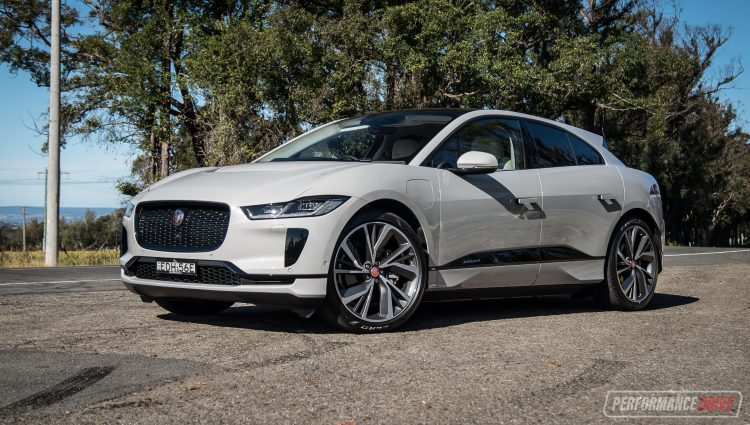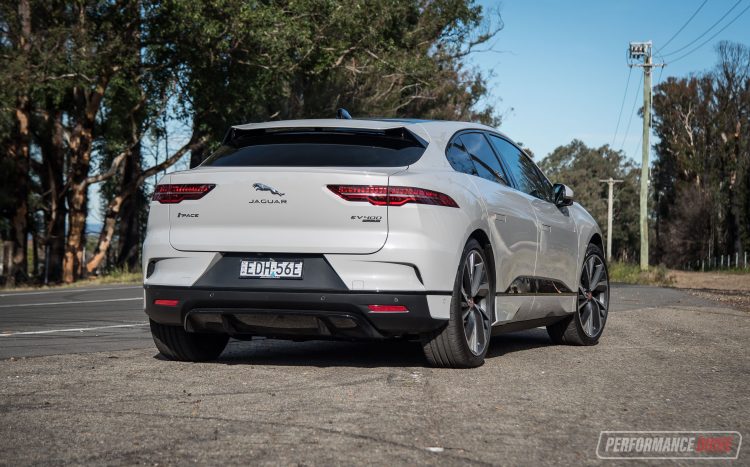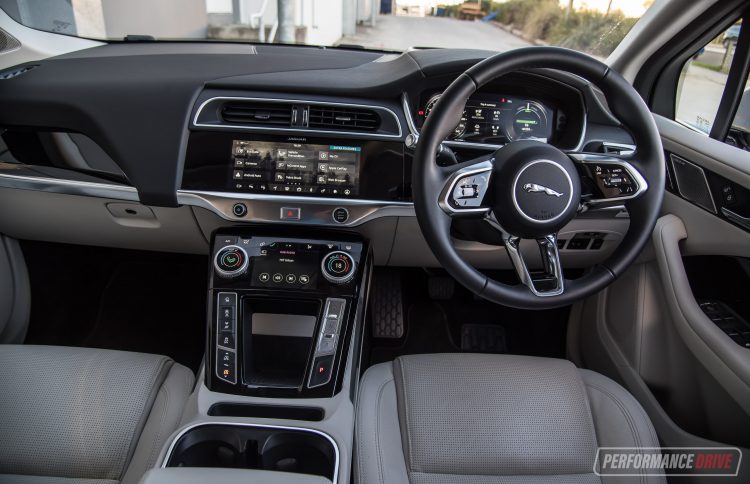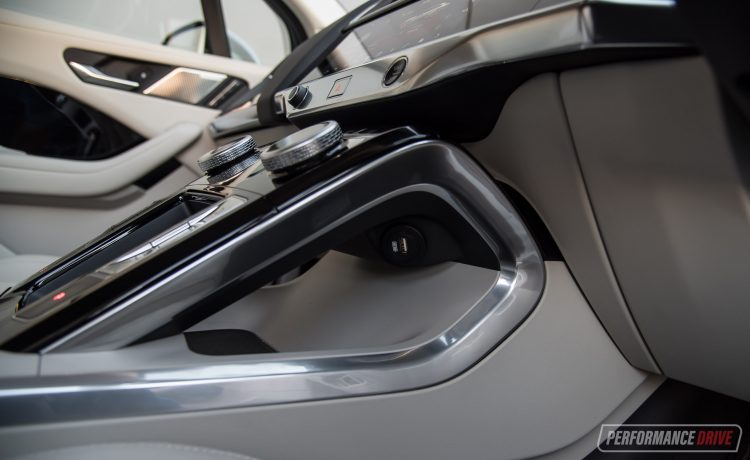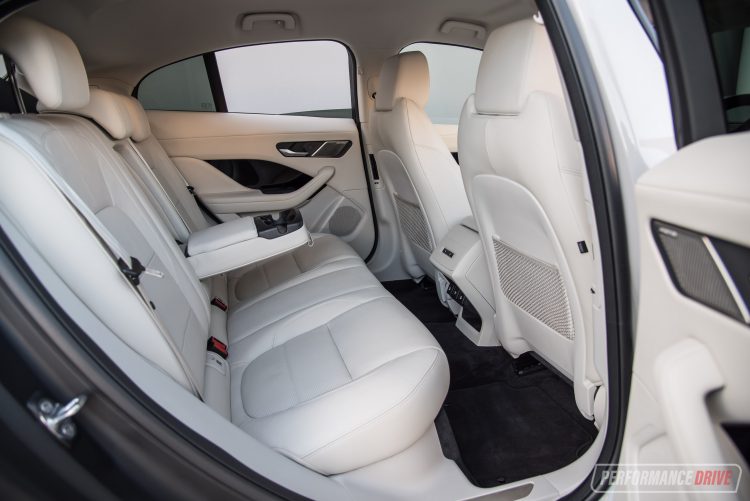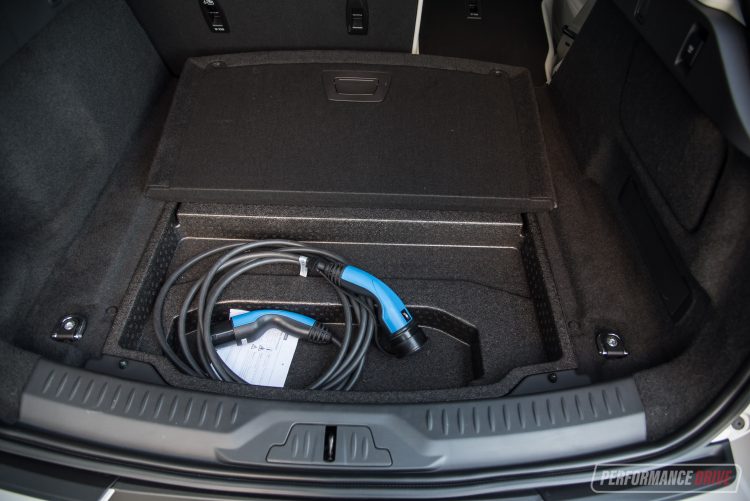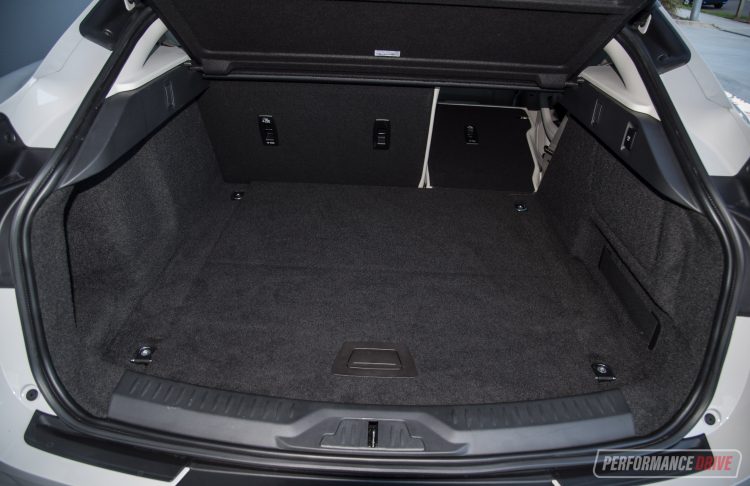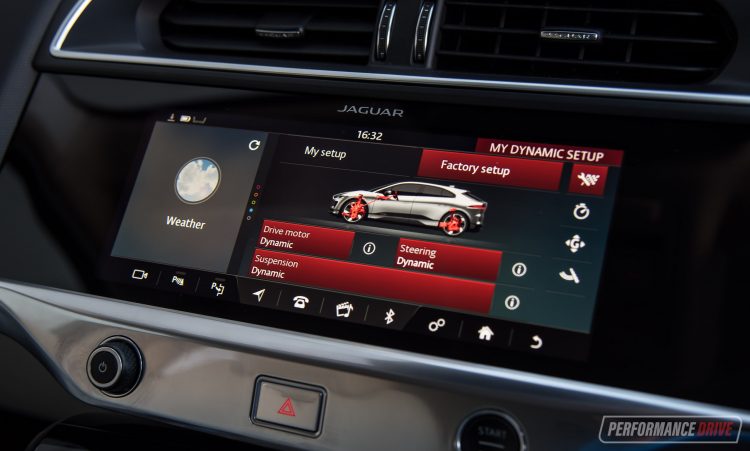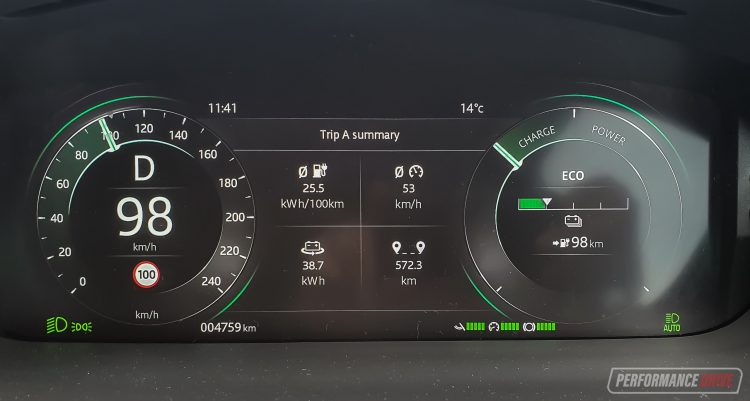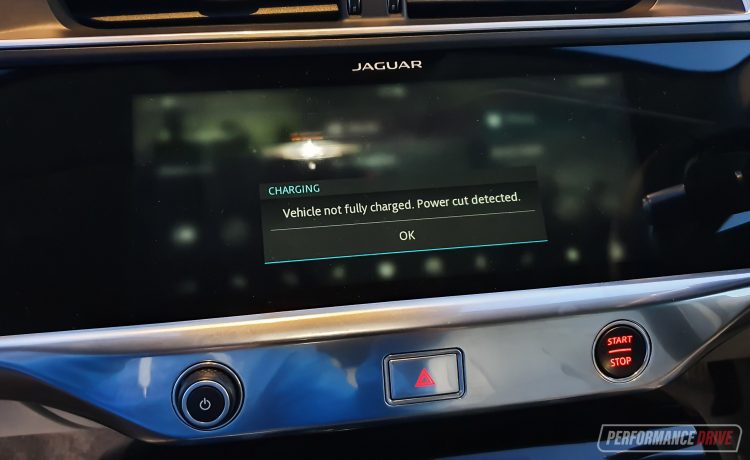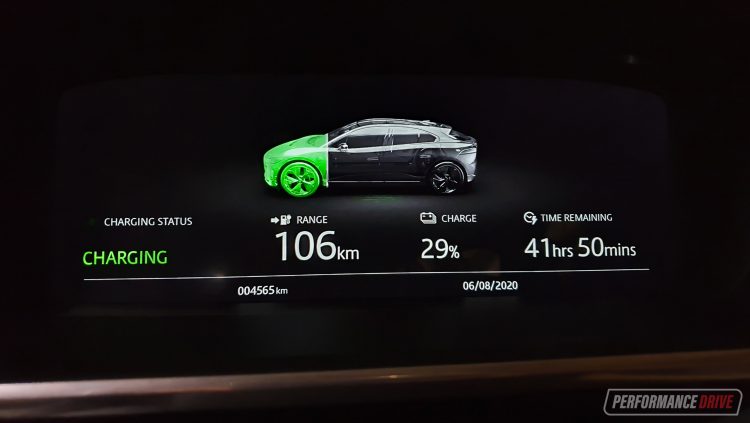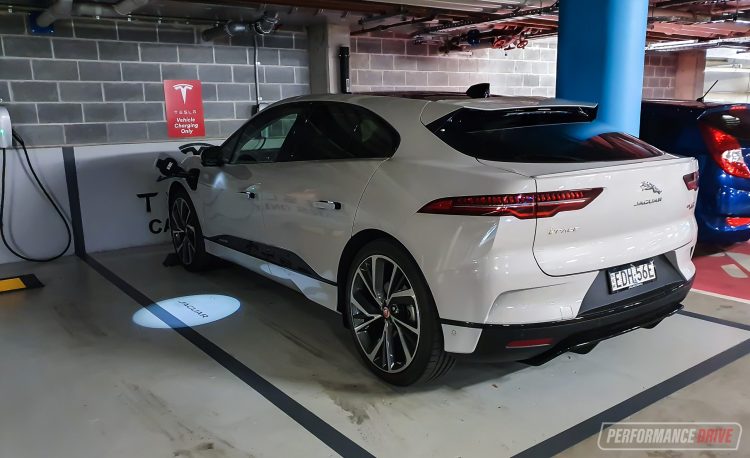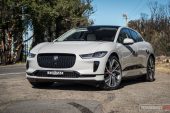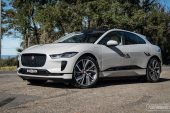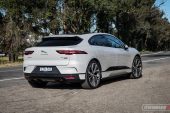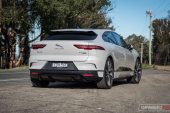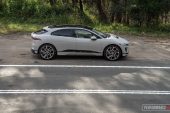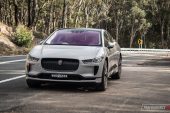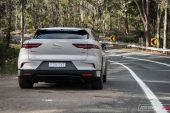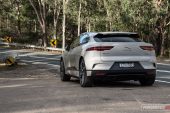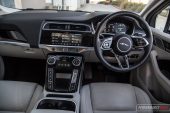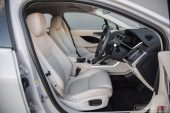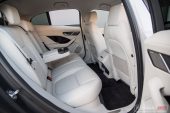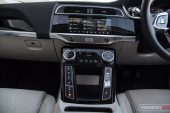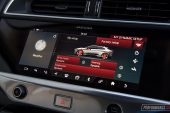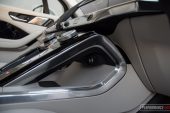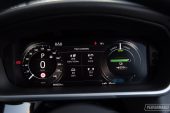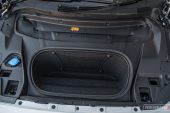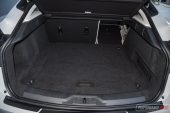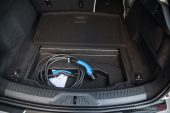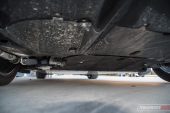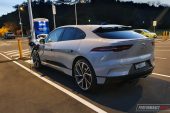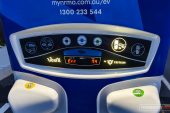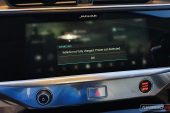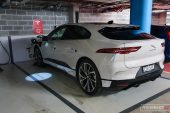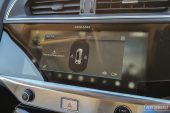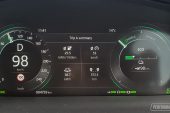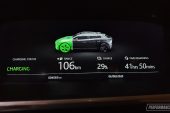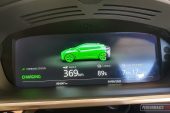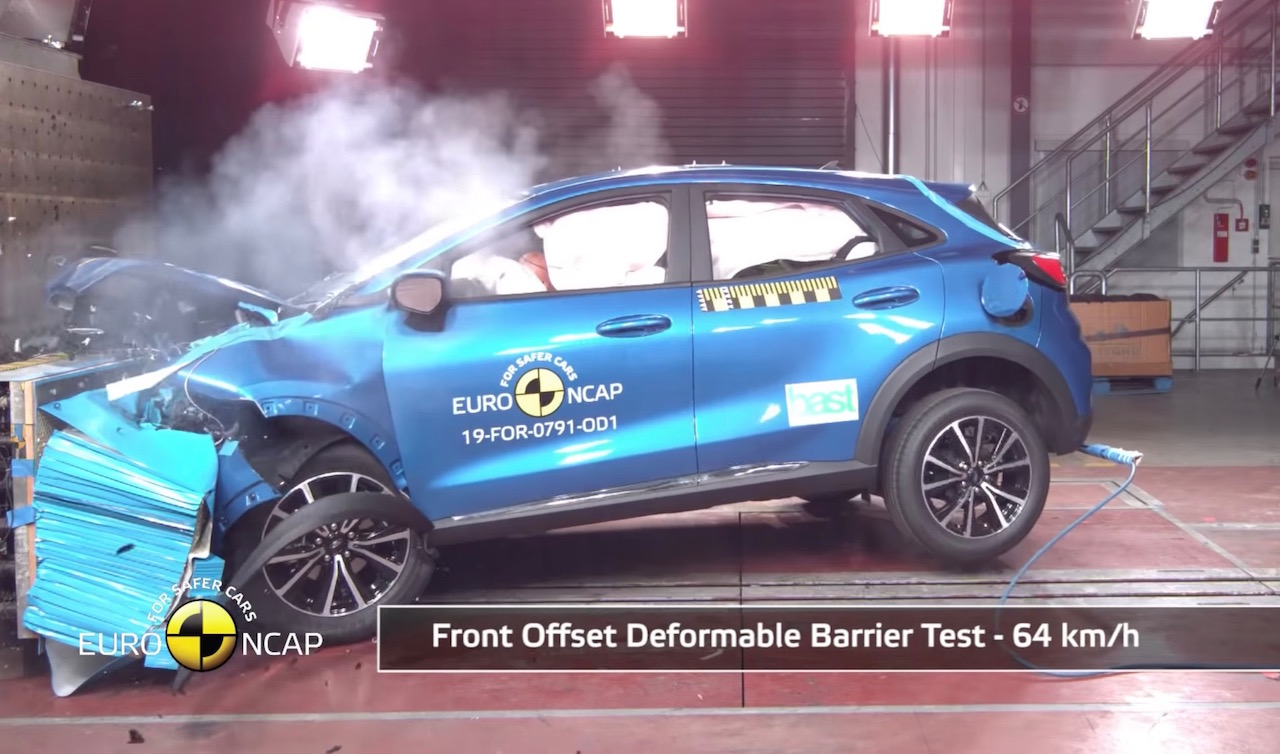It’s been over a year now since Jaguar launched the I-PACE. At that time it was the first premium fully electric SUV to hit the market between the established marques. So what’s it like now that Australia’s EV infrastructure has improved? Is it time we take these EVs more seriously?
Jaguar continues to offer three main trim levels, spanning from the S, SE, and HSE. Unlike some of Jaguar Land Rover’s other more recent models, which have been stripped down to a sole R-Dynamic trim, the I-PACE isn’t available in other variant levels. All feature the same ‘EV400’ fully electric powertrain. For this test we’re looking at the mid-range SE variant – for our initial review of the top HSE model you can click here.
Prices start from $128,248 for the S, from $137,848 for the SE, and from $151,448 for the HSE (excluding on-road costs). Taking a look back in time, prices have actually climbed over the last 12 months or so. For example, the SE originally started from $130,200 in 2019. Although, Jaguar may have added further specification into the package.
2020 Jaguar I-PACE SE – THE SPECS
[column width=”47%” padding=”6%”]Power source: 90kWh lithium-ion battery, 2 electric motors
Output: 294kW / 696Nm
Transmission: Single-speed auto
Drive type: All-wheel drive
Wheels: F: 20×8.5, 255/50 (optional 22s fitted)
ANCAP: Five stars
Tare weight: 2133kg
Power-to-weight: 7.25:1 (kg:kW)
Recharge: DC 100kW, AC 7kW[/column] [column width=”47%” padding=”0″]Range: 470km (WLTP)/377km (EPA)
0-60km/h: 2.58 seconds*
0-100km/h: 4.73 seconds*
0-200km/h: 21.56 seconds*
60-110km/h: 2.92 seconds*
1/4 mile: 13.25 seconds at 169.6km/h*
Max acceleration: 0.886g
100-0km/h braking: 2.83 seconds at 36.31 metres*
Max deceleration: -1.227g
Priced from: $137,848[/column][end_columns]
* Figures as tested by PerformanceDrive on the day. Factory claims may be different
2020 Jaguar I-PACE SE – THE PACKAGE
It’s arguably the best interior in the class. It manages to blend technology and gracefulness better than any other, with think. Like, take a look at the centre dash stack. There’s an archway/bridge which contains two separate touch-screens. The top screen houses the main media and vehicle settings, while the bottom unit does all of the climate settings.
And the bottom unit also includes some of the most elegant temperature control dials we’ve ever seen. They contain their own displays, which change depending on what you’re adjusting.
If this seems a bit complex, that’s because it is. A bit. You need to pull the dial outward for the fan speed control, or push it in for seat heating, or leave it in the default position for the temperature adjustment. Even so, what a thing to look at. The twin dials also feel very nice and well made. As does the centre console itself.
A handy storage tray is hidden behind the A-frame of the ‘bridge’, and if you look closely you’ll spot sneaky USB ports, which are perfect as you can have your phone charging behind there without the cords and stuff all tangled up, cluttering up the stunning interior design.
What we love most about the cabin is the sheer practicality and space. In the front it feels like a large sedan, but being a crossover means the seat height is slightly raised. This helps during enter and egress. Headroom isn’t going to be an issue for most shapes and sizes, and there is a real sense of airiness and light, almost like open-plan living. A centre console box, doubling as an armrest, also contains additional device charging facilities.
Taking a look at the back seat, it is perhaps even more inviting. The floor is almost completely flat, however, there is a raised up section in the middle, like a transmission tunnel. This is strange because there is no drive shaft running down the middle. Instead, the I-PACE features two electric motors; one placed at the front to power the front axle, and another at the back to propel the rear wheels. It’s not like the I-PACE is directly based on an existing model line either.
The I-PACE is underpinned by a unique version of the company’s D7 platform, called D7e. Although, it is loosely related to the D7a layout used on everything from the Jaguar XE and XF, to F-PACE, and it’s even related to the D7u layout used by the Land Rover Discovery and Range Rover Sport. Even still, there is no need for the raised section in the middle.
A convenient benefit of doing without a big and bulky combustion engine is the ability to offer two boots. At the front the I-PACE’s bonnet opens up to a nifty cavity which is great for smaller items, or the vehicle’s public station charging cord ($425 option).
At the back is a huge main boot, complete with under-floor storage. The under-floor bit is also perfect for storing the charging cord so long as you aren’t often carrying around a lot of things in the back. Otherwise you’ll need to lift the floor up and watch everything slide around on top.
Jaguar does of course, as per tradition, offer a huge range of options and additional luxuries. Some of the highlights include four-zone climate control ($1820), special 14- or even 16-way power front seats with heating functions (up to $6150), and a high-end Meridian 3D sound system ($1040) – an 11-speaker setup comes as standard. This test vehicle also shows off the awesome 22-inch alloy wheel option ($2600). We think it’s a bit pathetic that head-up display sets you back $1040.
2020 Jaguar I-PACE SE – THE DRIVE
No drive experience can possibly match the serenity and calmness of an electric vehicle. So, automatically, the Jaguar I-PACE is fantastically relaxed and feels luxurious to drive. Opting for the air suspension package ($2002 on the SE), like on this vehicle, adds to this by providing a plush ride that’s also adjustable to improve overall versatility.
Pushing it around corners results in a really engaging and entertaining experience. This definitely handles like a proper modern Jag. There’s a good level of feedback through the steering, and despite weighing 2133kg, it doesn’t feel that heavy. Planted and solid, yes. But not cumbersomely heavy, by any means. This is a vehicle that entices you to go for a spirited drive just for the fun of it.
We particularly enjoy tackling corners and applying liberal doses of that grunt nice and early in the bend. And then letting the clever all-wheel drive system sort it out. It’s amazing how much grip there is available, even with 696Nm at the ready as quick as you can press the throttle pedal. It’s basically impossible to provoke wheelspin.
The straight-line performance from the dual electric motors is astonishing. We clocked 0-100km/h in just 4.73 seconds, slightly bettering Jaguar’s claim of 4.8 seconds. Even though this figure looks impressive on paper, we think it’s the sheer effortlessness of the power delivery that really tickles your funny bone and gets you all giggly. You only need to lean on the pedal and she’s away, like a startled cat.
The downsides to the drive experience? Unfortunately, there are a few that we feel the need to report. Firstly the range estimator readout on the instrument cluster does not seem accurate. This is especially bad in an EV as you find yourself constantly observing the range. But if that range is not even accurate, then that’s more of a worry.
We also had concerns about the charge/power indicator, and the regenerative braking capability. For example, we drove down the main part of Mt Ousley to the south of Sydney, featuring an exact downhill distance of 5.1km.
We coasted all the way down, with the air-con off and in Eco mode. We kept it in the ‘charge’ zone the entire way. However, the range went from 286km at the top to 280km by the time we reached the bottom. This doesn’t make sense. If the gauge said we were ‘charging’ the whole time, why did the range indicator go down? In other EVs we have seen the range go up during downhill coasting. Surely Jaguar has test drivers that can confirm the calibration on this sort of stuff before it gets signed off for the market?
Another issue we faced was to do with charging. And we must admit this is not an issue with the Jaguar but more a concern about the infrastructure. We drove to Picton, again to the south of Sydney, to use the NRMA charger. Once we plugged it in, it sat there “initialising” for some time.
Eventually a message popped up on the dash that said something about a power cut issue. The charger itself also said “Err 74”. So, we decided to ring the number on the charging station. After 30 minutes on hold and discussing the problem they said they “can’t seem to reset it remotely”. I tried hitting the emergency stop button on the station and the whole charger rebooted. But the same error message returned after plugging in.
We also did something that’s sure to piss off a lot of Tesla owners out there. We tried two Tesla destination chargers, with the Type 2 socket. Both said “initialising” for some time. We walked away to the shops for 20 minutes or so just in case it was actually charging. Upon returning to the vehicle the range indicator hadn’t changed – it wasn’t charging. With frustration levels through the roof we decided to just plug it in at home.
Plugged into a normal socket the dash said it would require 42 hours to charge. We ended up leaving it charging from Thursday night at around 7pm, until Saturday afternoon at about 3pm. It reached just 368km indicated range – not even full (about 90%).
Obviously if you buy one of these you’re probably going to invest in a faster charging wallbox setup, which will slash charging times.
Overall the biggest problem with the drive experience in our opinion is the infrastructure. It’s extremely annoying that there are a variety of different charging plugs and public charging stations out there. Imagine going to a petrol station with a conventional car and being told the pump is reserved for Ferraris only. Or finding out the bowser doesn’t fit in your car and only fits in some makes and models.
Also, imagine going to a petrol station to find there is only one pump available, but it’s malfunctioning, despite apps telling you that it works prior to your arrival. All of this resulted in unpleasant experience for us. Which is a massive shame as the I-PACE is wonderful in all other areas.
2020 Jaguar I-PACE SE – THE VIDEO
2020 Jaguar I-PACE SE – THE VERDICT
Our overall experience with the I-PACE was enlightening in many ways. However, our experience was also riddled with many frustrating moments. The infrastructure, charging times, number of different sockets and plugs out there, and indicated range all limit your movement and ability to live life as normally as you can with a combustion engine vehicle.
We’ve always appreciated cars for being a great tool for expanding your freedom. Right from when you first get your licence, there’s a sense that you can go anywhere and do anything. With EVs, there seems to be a constant stress about planning your route and making sure you drive carefully enough and ensuring you have the battery topped up the night prior. The sense of freedom is not the same as a petrol/diesel or hybrid.
If you are adamant on an EV though, the I-PACE is about as good as it gets. The drive is really peaceful, and the in-car atmosphere is pleasant yet luxurious and very modern. It’s also one of the best-handling EVs in this market space, in our view. Jaguar’s air suspension system provides a sublime ride too, and paired with the silence of the drive, it really can feel like you’re riding on a cloud. An extremely fast one, at that.
[column width=”47%” padding=”6%”]PROS:
– Excellent handling; proper modern Jaguar
– Well presented interior with integrated tech
– Spacious cabin and big boot
– Instant power provides thrilling acceleration
– Another stunning JLR design
[/column] [column width=”47%” padding=”0″]CONS:
– Inaccurate range estimate
– ‘Charge/Power’ gauge needs improved calibration
– Quite expensive yet some options are costly[/column][end_columns]
As always, if you’re thinking about buying a new car don’t forget to click here to speak with our car buying specialists.
